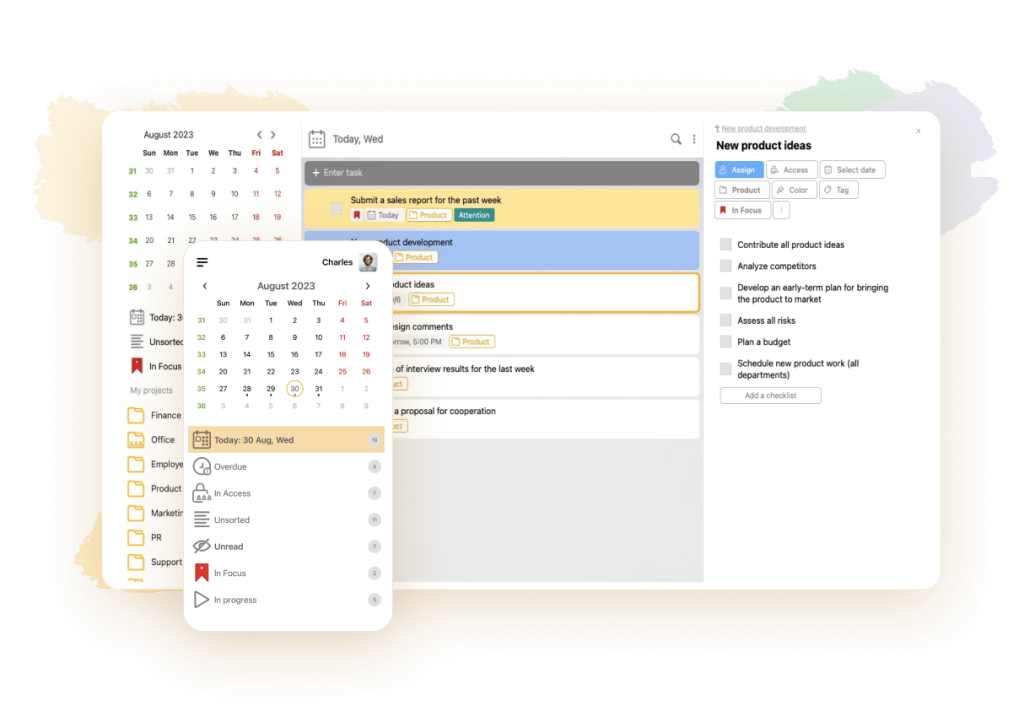Matrix organisational structure

Recent trends require businesses to be flexible, able to quickly adapt to constantly changing market conditions. That is why many modern companies practice the development of several types of activities. This tactic allows a business to stay afloat longer. It can abandon unprofitable, unprofitable divisions in favor of more promising ones. Such structures are called flexible, adaptive. One example of these structures is the matrix management structure.
What is a matrix structure: concept, characteristics, principle
Each large company includes subdivisions, departments, teams, their managers and executives. Together they form a single mechanism, between the individual parts of which are formed their own links and mechanisms of interaction. A hierarchical scheme demonstrating the composition, subordination and links in the company is called its organizational structure. On its basis, the composition of subdivisions is formed, the methods of delegating authority are chosen, responsibility is distributed among the members of the team. This structure is used to build a model of personnel management.
Linear-functional structure is the simplest and most economical. It is the basis for the work of all state institutions. Decisions in it are made centrally. However, it takes a long time to make them.
The divisional structure is based on a specific product, region, or service. All divisions choose their own management tactics, taking into account the specifics of production. Maintains financial planning, marketing and personnel policy.
Matrix organizational structure of management is a kind of “hybrid” of the two previous structures, based on administrative and functional subordination. It is created by combining program-target and line structures. When this management structure is chosen, all team members working in the office or remotely are subordinate to the project manager and the head of the division to which they belong. This method of management helps to unite team members into a common team, organize joint work and coordinate the activities of each performer.
Two types of executives function simultaneously in companies:
- Unit manager – he is responsible for the work of his department permanently.
- Project Manager – leads the team on the project. He is appointed for the duration of the project. When the project is completed, his authority is terminated.
The matrix management structure is implemented in order to increase the efficiency of interaction between separate divisions of the company, for quick and quality fulfillment of tasks. The following features characterize it:
- Adaptability, the ability to adjust quickly to changing conditions.
- Lack of bureaucracy.
- Focused on resolving any issues quickly.
- Decentralization of power in the company, creation of temporary decision-making bodies.
- Lack of detailed division of labor by types of work performed, assigned workplaces. Employees actively communicate with each other, move around the offices.
- Personal responsibility of each performer for the overall results.
- A limited period of existence related to the fulfillment of a project, the solution of some task.
The scheme of the matrix management structure looks like a lattice or matrix, in which vertically the management of individual activities, linear and functional departments are arranged, and horizontally – the management of projects, products, individual programs.
Advantages and disadvantages of the matrix management structure

Let’s inspect the features of the matrix management structure, the pros and cons of this type of management. Its advantages:
- Achieving strong results on a variety of projects;
- Effective integration of specialists, departments, divisions within a common project;
- Active management position;
- Involvement of all professionals with managers in work processes;
- Strengthening the personal responsibility of performers and management;
- Lack of internal barriers in the team or organization;
- Acceleration of technical re-equipment of production;
- Prompt response to changes in the external environment.
There are disadvantages to the matrix structure as well. These are:
- Labor-intensive, significant financial costs for implementation;
- Need for pre-training of staff;
- The problem of overlapping executive functions;
- Low efficiency in times of crisis.
Types and applications of matrix structures

Three types of matrix structures are distinguished by the type of distribution of powers of the managerial level:
| Weak | Balanced | Strong |
| The unit manager manages the budget and deadlines. The project includes a project manager, who reports to the company management, and a project forwarder, who is selected among the team members. | Each manager is responsible for his own area of work. The function of a manager is performed by an employee of a functional unit. He assigns tasks to the team and controls their fulfillment. | The project manager, who is specifically authorized to carry out the project, directly handles the management. The unit manager has very limited authority. He acts as an observer. |
If a matrix management structure is chosen, all employees of the company report to the director of their department and the project manager. The project manager manages two groups of subordinates:
- Temporary. They include specialists from departments that perform a narrow range of work within the project.
- Permanent. These are performers from different departments who work together on a project until its completion.
Project managers are responsible for timely completion of tasks and maintain interconnections between all project participants. The top management staff (top manager, general director) does not deal with current issues. Therefore, heads of departments and divisions are responsible for the quality of completed operations and meeting deadlines.
This organizational structure was originally used in the space industry. From there it spread to the IT and electronics industry. Today its use is advisable in companies that implement new technological solutions and master innovations. Therefore, it is most often implemented at enterprises with an increased volume of design and research work. Many American companies, including Microsoft, Sony or IBM, are examples of the matrix management structure.
Challenges in implementing the matrix management structure
Staff accustomed to a clear hierarchical management scheme may find it difficult to adjust to the matrix type of management. The transition to a new organizational structure may be accompanied by the following problems:
- Conflict of interest of project and functional managers;
- Lack of understanding of their roles by the implementers;
- Overlapping horizontal and vertical authority;
- Difficulties of control.
To avoid these phenomena, project managers should actively interact with department heads. Set tasks for the final executors through them. Form teams of no more than 10 people to work on the project. Heads of departments should clearly inform each employee of his role in the work process and distribute areas of responsibility. The top manager and the head of the company should delimit the powers and responsibilities of both managing parties by fixing these provisions in job descriptions. Conduct planning at two levels: within a division and a project.
Using LeaderTask for team-management

Constant changes taking place in the economy require modern companies to be flexible in personnel management. Effective management of employees is impossible without systematic monitoring of their performance. Without a picture of staff productivity, it will be difficult for a managing manager to understand how things are going in the company. This can lead to problems surfacing when it is too late to change anything.
LeaderTask is a reliable assistant for every competent manager, a functional and modern service for personnel and project management. The program will keep you informed about all the things happening in your team and company. Demonstrates the performance of each employee on an informative graph. Will display the overall picture of work on tasks on the Kanban board, indicating the status of each task. Reminds about an important event, activity, soon to be completed task. Provides prompt resolution of current project issues via corporate chat. Will show inefficient and lagging performers. Will help to focus on the main tasks and put things in order.
Conclusion
The use of matrix structure in organization management allows to abandon the principle of one-man management and gives each employee a chance to demonstrate his best qualities to the fullest extent. Using this organizational model, companies are more quickly rebuilt when setting new tasks, work more coherently and in a coordinated manner. The greatest economic effect from the introduction of matrix structures is achieved at large enterprises producing complex products.



